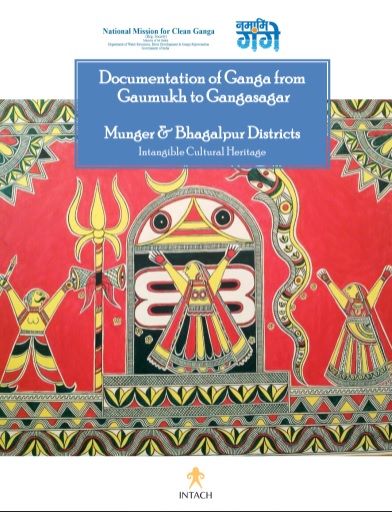Cultural Documentation of River Ganga from Gaumukh to Ganga Sagar – Munger and Bhagalpur Districts
This Namami Gange project is being undertaken for the Jal Shakti Ministry, Government of India, under the National Mission for Clean Ganga (NMCG) scheme. INTACH is assisting the Ministry in the capacity of a knowledge partner. Three divisions of INTACH namely; Natural Heritage (NH), Architectural Heritage (AH) and Intangible Cultural Heritage (ICH) divisions have been engaged in the cultural mapping project, of three aspects natural, tangible and intangible assets along Ganga.
The objective of the project is to conduct field investigation and document existing cultural assets on either side of the river Ganga (within a radius of 5Kms, starting from its source, i.e. Gangotri, down to its point of dispersal at Ganga Sagar) and to produce for the ministry a detailed, illustrated report based on the primary and secondary resources available.
Munger and Bhagalpur Districts

The report on Munger/Bhagalpur area charts the history of the region, from its ancient past to its modern avatar, highlighting the strategic advantages of its location on the banks of the river Ganga.
Long-established spiritual beliefs and ritualistic traditions are seen through the documentation of the Kanwar traditions of Bihar which initiate from Sultanganj are mentioned in the report. The other interesting aspects covered in the report are that of the continuing silk traditions of Bhagalpur, with the weaving of fine tussar, that proclaim its own cultural importance; as well as the heritage of Angika or Manjusha art form that is lesser known than its famous neighbour, the Madhubani style, but equally unique. The research also delves into the references to Munger in Bengali and English literature, and details some of the notable personalities from this region, like Nandalal Bose, Niranjanananda Saraswati, Tilkha Majhi and Ramdhari Singh ‘Dinkar’.
Check out more on the INTACH ICH Archive:
https://icharchive.intach.org/Detail/collections/81



 Projects
Projects









